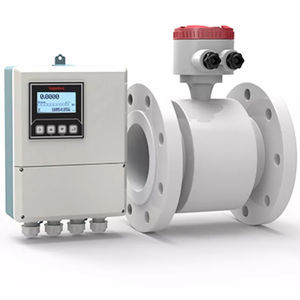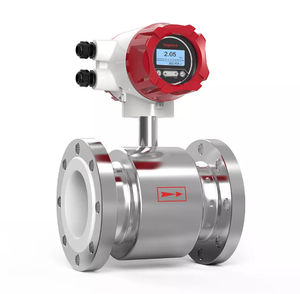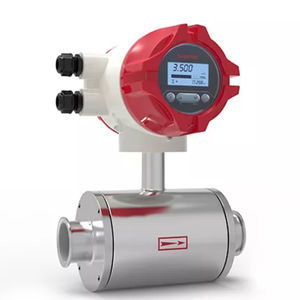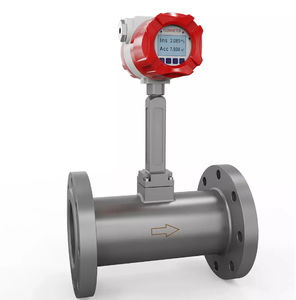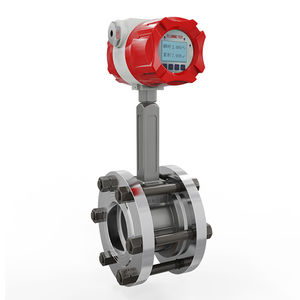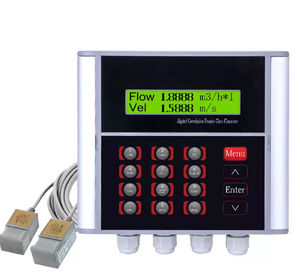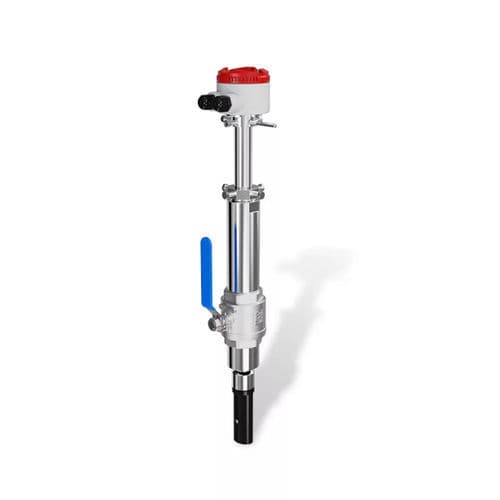
Electromagnetic flowmeter SUP-LDGvolumefor conductive liquidsfor chemicals
Add to favorites
Compare this product
Characteristics
- Technology
- electromagnetic
- Type
- volume
- Fluid
- for conductive liquids, for chemicals, for wastewater
- Pipe diameter
- DN100 - 4"
- Installation
- insertion
- Communication
- 4-20 mA, RS485, GPRS, HART
- Supply voltage
- 24 Vdc, 12 Vdc, 36 VDC
- Protection level
- IP65, IP68
- Applications
- for water treatment
- Process temperature
Min.: -20 °C
(-4 °F)Max.: 80 °C
(176 °F)- Process pressure
1.6 MPa
- Precision
1.5 %
Description
Supmea Insertion type electromagnetic flowmeter is based on Faraday's law of electromagnetic induction. In the electromagnetic flowmeter, the conductive medium in the measuring tube is equivalent to the conductive metal rod in the Faraday test, and the two electromagnetic coils at the upper and lower ends generate a constant magnetic field.
Introduction
The SUP-LDG insertion electromagnetic flowmeter is a type of flow meter that is designed to measure the flow of conductive liquids in large pipes. This type of flow meter is installed directly into the pipe and measures the flow of liquid by detecting the electromagnetic field that is generated by the flow. It consists of a probe that is inserted into the pipe and a transmitter that is mounted on the outside of the pipe.
The transmitter generates a magnetic field that is picked up by the probe, and the resulting voltage signal is proportional to the flow rate. Insertion electromagnetic flowmeters are typically used in large pipes where it is not feasible to install a full-bore flow meter, and they are commonly used in industries such as water treatment, wastewater treatment, and chemical processing. One of the advantages of an insertion electromagnetic flowmeter is that it can be installed without having to shut down the process, which can save time and money.
Measuring principle
The working principle of the Insertion type electromagnetic flowmeter is based on Faraday's law of electromagnetic induction. In the electromagnetic flowmeter, the conductive medium in the measuring tube is equivalent to the conductive metal rod in the Faraday test,
VIDEO
Catalogs
SUP-LDG Flow meter
16 Pages
Related Searches
- Flowmeter
- Volume flowmeter
- Liquid flowmeter
- Pressure transmitter
- Pressure gauge
- Level probe
- Analog pressure transmitter
- Liquid level probe
- Gas flowmeter
- Stainless steel flowmeter
- Waterproof flowmeter
- Industrial flowmeter
- Pressure probe
- Waterproof pressure transmitter
- Stainless steel pressure transmitter
- Membrane pressure transmitter
- Analog level probe
- Relative pressure transmitter
- Precision flowmeter
- Compact flowmeter
*Prices are pre-tax. They exclude delivery charges and customs duties and do not include additional charges for installation or activation options. Prices are indicative only and may vary by country, with changes to the cost of raw materials and exchange rates.






